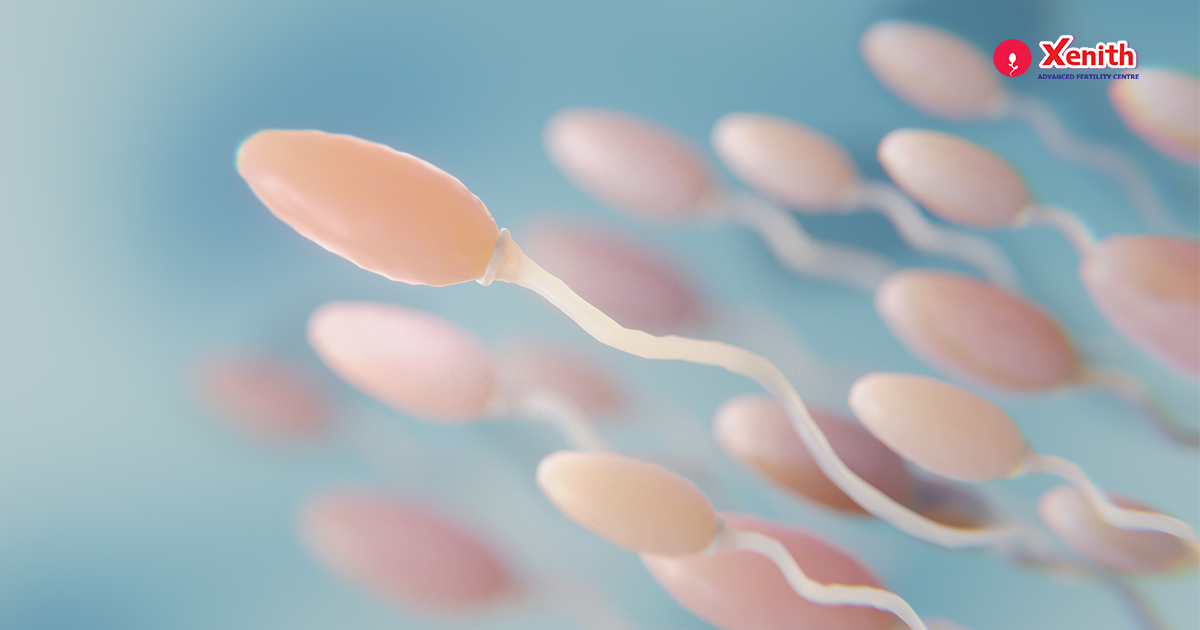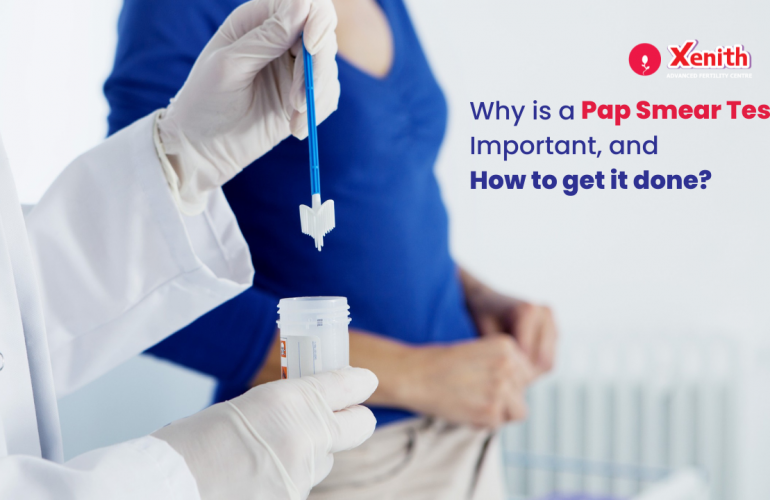Understanding a semen analysis report is a vital step for men undergoing fertility evaluation. This comprehensive test measures several parameters of the semen sample to evaluate male reproductive health. At Xenith IVF, we help you interpret the results clearly, using WHO standards as benchmarks, and link these findings to potential treatments like IUI or ICSI.
What Is a Semen Analysis Report?
A seminal fluid analysis report evaluates various aspects of sperm and semen to assess a man’s fertility potential. It includes key parameters such as sperm count, motility, morphology, volume, pH, and more. Each of these factors is compared against normal seminal fluid analysis values as defined by the World Health Organization (WHO).

Free Thursday Consultation
How to read Semen Analysis Report
Here’s how to interpret the key elements of your semen analysis report:
1. Ejaculate Volume
- Normal Range: 1.5 to 5 mL (WHO lower limit: 1.5 mL)
- Significance: A lower than normal semen volume can reduce the number of sperm available for fertilization and may suggest blockages or issues with the seminal vesicles.
2. Sperm Concentration
- Normal: ≥15 million/mL
- Low Range: <5 million/mL
- Significance: Low concentration decreases the probability of successful fertilization; zero sperm could indicate obstruction or a complete lack of sperm production.
3. Sperm Motility
- Normal Total Motility: ≥42%
- Ideal Progressive Motility: ≥60%
- Significance: Poor motility means fewer sperm can reach the egg, which reduces the chances of natural conception.
4. Sperm Morphology
- Normal: ≥4% with normal structure
- Significance: A low percentage of normally shaped sperm can hinder fertilization, even if other parameters are normal.
5. pH Level
- Normal Range: 7.2 to 7.8
- Significance: Abnormal pH levels may affect sperm survival and motility and may indicate infection or structural issues.
6. Liquefaction Time
- Normal: Within 20–30 minutes (up to 60 minutes acceptable)
- Significance: Prolonged liquefaction time can impair sperm motility, which may prevent them from reaching the egg.
7. Sperm Count (Total Count)
- Normal Range: ≥39 million per ejaculate
- Significance: A low total count reduces the chance of fertilization and may influence whether IVF or ICSI is required.
8. General Appearance
- Normal: Whitish, grey, and opalescent
- Significance: Unusual coloration can indicate infections, inflammation, or the presence of blood in the semen.
9. White Blood Cell Count
- Normal: Very low or absent
- Significance: An elevated white blood cell count may damage sperm DNA and reduce fertility due to underlying infection.
10. Fructose Level
- Normal: ≥13 mmol/sample
- Significance: Low fructose levels suggest issues with the seminal vesicles, which may affect sperm energy and motility.
Things to Remember Before Getting Your Semen Analyzed
To ensure accurate results from your sperm analysis report, follow these pre-test guidelines:
- Avoid alcohol, drugs, and caffeine for at least 1 week before the test.
- Refrain from ejaculation for 3 to 7 days prior to sample collection.
- Consult your doctor about stopping certain medications, especially hormonal treatments.
- Prefer sample collection at the lab to ensure it is tested within 60 minutes and stored at 20°C to 37°C to maintain sperm viability.
Linking Your Results to Fertility Treatment
Depending on your results, different fertility treatments may be recommended:
- IUI (Intrauterine Insemination): Recommended when sperm count and motility are slightly below normal but still within a functional range. It involves placing washed and concentrated sperm directly into the uterus to increase the chances of fertilization during ovulation.
- IVF (In Vitro Fertilization): Suitable for cases with borderline sperm parameters, especially when previous attempts with IUI have failed. Sperm and eggs are fertilized outside the body in a controlled environment and then implanted into the uterus.
- ICSI (Intracytoplasmic Sperm Injection): Typically advised for men with severely low sperm count, poor motility, or abnormal morphology. A single healthy sperm is directly injected into the egg to assist fertilization, often used in conjunction with IVF.
- Medical or lifestyle treatment: When infections, hormonal imbalances, or pH abnormalities are detected, targeted medical therapies or lifestyle changes (such as improved nutrition, quitting smoking, or stress management) are recommended before pursuing assisted reproductive techniques.
FAQs on Interpreting Sperm Analysis Results
Compare your values to the WHO-recommended normal ranges for each parameter.
A normal report includes volume ≥1.5 mL, concentration ≥15 million/mL, motility ≥40%, morphology ≥4%, and pH 7.2–8.0.
It is the time semen takes to become liquid after ejaculation; normal range is within 20–60 minutes.
Summary
Understanding how to read a sperm analysis report empowers you to make informed decisions about your reproductive health. With expert evaluation and personalized treatment recommendations, Xenith IVF helps patients interpret their sperm test results and guide them toward the most effective fertility solutions.
Need help with your semen analysis report?
Contact Xenith IVF in Pune for expert evaluation, accurate interpretation, and guidance on IUI, IVF, or ICSI options based on your results.




